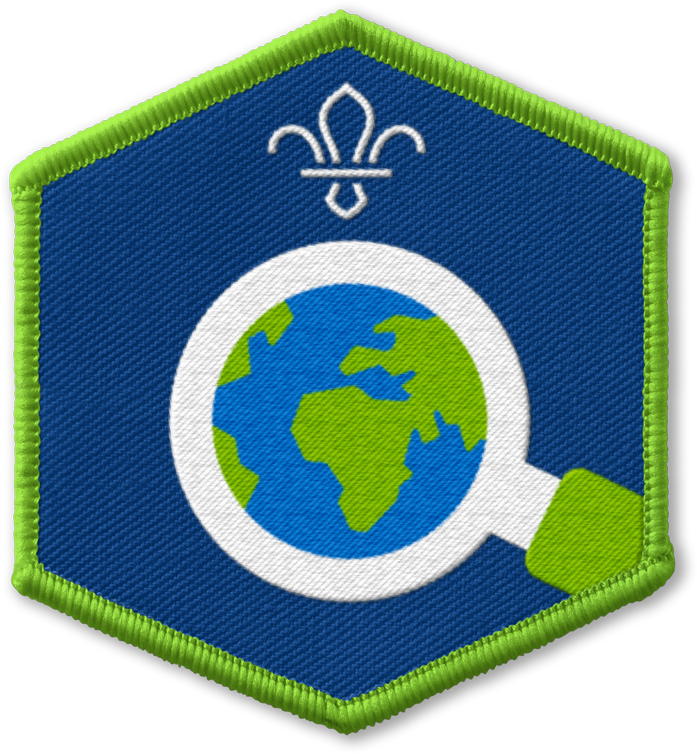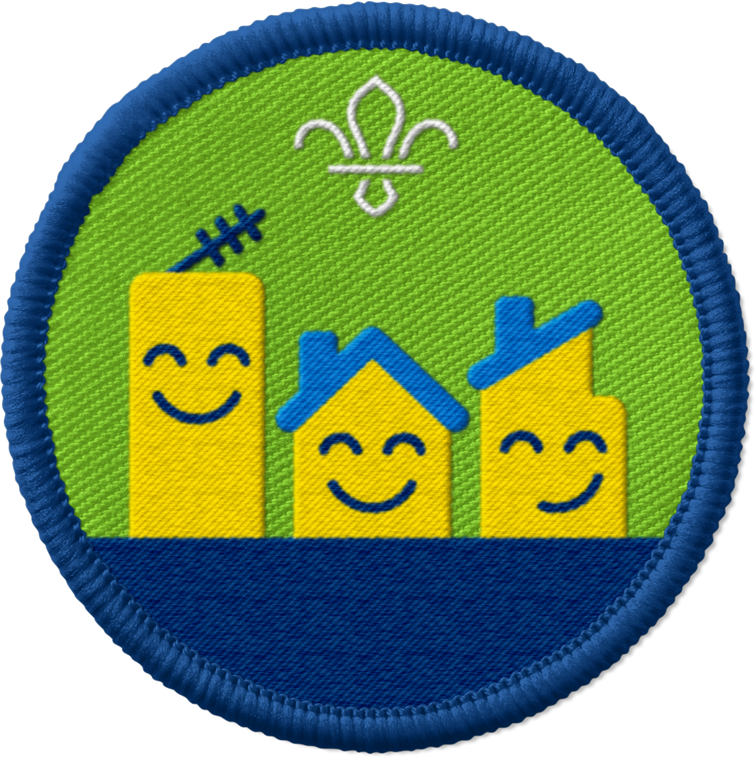Community bingo
You’ll need
- Pens or pencils
- Coloured pens or pencils
- Scrap paper
Before you begin
- Print out a bingo card per person.
- Invite someone who serves your community to talk to everyone about what they do. Great people to invite would include a local councillor, a shop or business owner, a teacher, a police officer or Police Community Support Officer (PSCO), a medical professional (a GP, nurse, dentist, or pharmacist), a faith leader, or a sportsperson. They’ll need to know who you are and when and where you meet.
- A parent or carer may be your visitor, or they may know someone who serves the community and would love to join you.
- Give the visitor plenty of notice and check if they have any accessibility or travel needs (for example, level access to your meeting place, information about bus routes, or a parking space).
- The day before (or even on the day) get in contact to make sure they’re still planning to join you.
Plan questions for your visitor
It’s up to you when you do this—you may want to do it at the start of the meeting your visitor will join, or you may want to do it during the meeting before, or ask everyone to think about their questions at home.
- The person leading the game should tell everyone what the visitor does to help their community.
- Everyone should get into pairs or small groups. They should think about what they’d like to find out, and what questions they’d like to ask the visitor.
- The pairs or groups should take it in turns to tell the person leading the game their ideas, and the person leading the game should make sure everyone’s questions are ready to be asked. People could write their questions down if they think they’ll forget.
Encourage everyone to think of varied and open questions—it’ll be much easier for your visitor to give an interesting answer to a question like ‘what’s the most exciting think about your job?’ than ‘do you like your job?’ for example.
Play bingo
- The person leading the activity should give everyone a bingo card and a pen or pencil.
- Everyone should look at the card to check which places they have.
- The person leading the game should run through all of the places to make sure everyone understands. They could talk about what happens there or who works there.
- Everyone should move around the space until they find someone who’s visited one of the places on their card. They should look for someone who’s visited that place in their local area—going to a swimming pool on holiday somewhere else doesn’t count for this game.
- When a player finds someone who’s visited a place, they should cross it off and write the person’s name in the space by the picture.
People could write their own names on other people’s cards to make it quicker.
- Everyone should keep moving around the space until they’ve found a different person for each place on their bingo card.
- The first person to fill in all of the places on their bingo card is the winner. Everyone else can keep playing until their cards are full.
Welcome your visitor
It’s up to you when your visitor arrives. They may join you for bingo, or just come to talk to everyone afterwards. Remember, visitors should never be left alone with children.
- When the visitor first arrives, someone should welcome them. They should offer to hang up their coat, find them a chair, offer them a drink, and show them where the toilets are.
It’s up to you who does this.
- Once the visitor has settled in, the person leading the activity should introduce them and everyone should welcome them to the meeting.
- The visitor may want to introduce themselves a bit more and explain what they do. If they’d prefer to go straight to questions, that’s OK too.
- Everyone should take it in turns to ask the questions they planned with the person leading the activity. Everyone should remember to listen carefully and thoughtfully to the visitors’ answers. People may have more questions about their answers too.
- At the end, everyone should thank the visitor and give them a round of applause.
You may even want to sing them a song or invite them to take part in another activity or game.
- After the visit, everyone should think about how they’ll send the visitor a thank you message. Some people may want to write or draw thank you notes, or tell them what everyone learned.
Reflection
This activity reminded you that you’re a citizen. We often think about being global citizens of the whole world, but we’re local citizens too. Find a partner, and talk about one thing you learned about the visitor and their role in your community. Get back together as a group, and talk about people’s answers. What did everyone find out? Were there any surprises? What do you think it means to be a citizen? What’s a community? People may have ideas including family, school, and Beavers. Knowing what’s in our community means we know how to get involved and help.
This activity also gave you a chance to build friendships. Do activities like the bingo you played today help you talk to new people, including people you don’t normally play with? Did meeting someone from your community help you feel more connected to others in your community? How did your visitor help the community?
Safety
All activities must be safely managed. You must complete a thorough risk assessment and take appropriate steps to reduce risk. Use the safety checklist to help you plan and risk assess your activity. Always get approval for the activity, and have suitable supervision and an InTouch process.
- Active games
The game area should be free of hazards. Explain the rules of the game clearly and have a clear way to communicate that the game must stop when needed. Take a look at our guidance on running active games safely.
Leaders should ensure children are supervised at all times with visitors to the group.
You can play bingo in pairs if you want to.
People could just write initials on the bingo cards.
You could make your own bingo cards, especially if you want to play the game more than once. What else is in your local area?
The bingo cards have pictures as well as words—people could draw a quick doodle instead of their name if that works best for them.
You could also play the game sitting in a circle, asking if anyone’s visited the places on the cards.
All Scout activities should be inclusive and accessible.
You could bring bingo to life by going on a hike around your local area, crossing off the places as you spot them. You could include your own local landmarks, the more unusual the better—is there a house with a funky front door, or a shop selling something bizarre? If it’s long enough, this hike could count towards your Hikes Away Activity Badge. You could also complete some of your Safety Activity Badge, for example by checking everyone knows the Green Cross Code, what to do if a stranger approaches, or what you should do at a roadside or railway level crossings.
Why not ask everyone who they’d like to invite as the community member? People may want to meet someone specific who’s made a difference in their community, or there may be a role or job they’d like to learn more about.


